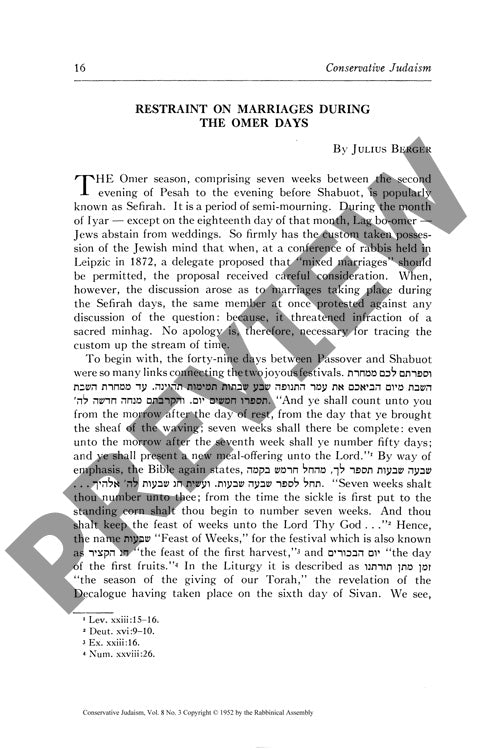Restraint on Marriages During the Omer D
Couldn't load pickup availability
Ancient Roman superstitions against May marriages, rooted in the Lemuralia funeral rites, unexpectedly shaped one of Judaism's most established customs - the prohibition of weddings during the Omer period between Passover and Shavuot. Through analysis of medieval rabbinical sources, Talmudic literature, and comparative religious practices, this research challenges three widely accepted religious explanations for the marriage restriction: the death of Rabbi Akiba's disciples, punishment in Gehinnom, and commemoration of Crusade-era persecutions. Primary sources including the Manhig, works by Rabbi Jacob ben Asher and Rabbi David Abudraham reveal significant inconsistencies and lack of textual support for these traditional rationales. Instead, the evidence suggests that medieval European Jewish communities adopted and religiously reinterpreted this widespread Roman custom, eventually integrating it so thoroughly into Jewish practice that its origins were obscured. The emergence of Lag B'Omer as an exception, based on numerological significance, further demonstrates how the practice became authentically Jewish despite its external origins. This cultural assimilation of ancient mythological "survivals" into Jewish law and custom illustrates the complex dynamics between indigenous and external influences in the development of religious practices.

More Information
-
Physical Description
-
Publication Information
Published 1952
ISBN
-
Publication Credits
Julius Berger

